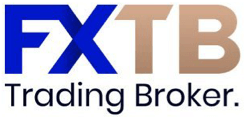FP Markets is an Australian-based CFD broker founded in 2005, offering multi-asset trading through an infrastructure that blends institutional-grade execution with retail accessibility. Built on transparency, regulation, and technology, the broker has developed a strong presence across Asia thanks to its multilingual support, low-latency trading environment, and cost-efficient account structure. By providing access to MT4, MT5, cTrader, and TradingView, FP Markets allows traders to combine global market exposure with flexible strategies adapted to regional time zones. For Asian traders looking for stability, direct-market pricing, and consistent execution, FP Markets stands out as a mature and reliable choice in the competitive CFD landscape.
| Regulators | ASIC CySec FSA |
|---|---|
| Minimum Deposit | $100 |
| Leverage | Between 1:30 and 1:500 | Payment Methods | Visa Mastercard Dragonpay Rupee Payments Fairpay Broker to broker Finrax China Union Pay Sticpay Skrill Rapyd Plusdebit Perfect Money Neteller PayTrust Bpay Paylivre Bank Transfer FasaPay Paypal |
FP Markets is a long-standing Australian multi-asset broker founded in 2005, known for its consistent service and strong regulatory foundation. Its operations extend across several global regions, including Asia, where the broker has built a loyal following among traders seeking institutional-grade execution combined with accessible trading conditions. FP Markets positions itself not as a flashy or aggressively promotional brand but as a quietly reliable player for traders who value depth of liquidity, transparent pricing, and multi-platform flexibility.
At first glance, the broker’s ecosystem feels purpose-built for serious traders. Both beginners and professionals can choose between STP and ECN-style account models, allowing them to align their cost structure with their trading style. FP Markets supports MetaTrader 4, MetaTrader 5, and cTrader, providing cross-compatibility for algorithmic systems, manual strategies, and social-copy integrations. This structural versatility makes it attractive to Asian markets, where trading behaviors range from highly technical forex setups to discretionary equity-index trades.
Unlike many offshore competitors, FP Markets maintains full transparency about its licensing and operational entities. Its regulation under the ASIC, CySEC, and FSCA provides strong assurance regarding client fund safety and trade execution oversight. Additionally, an offshore registration under the FSA of St. Vincent and the Grenadines expands accessibility for non-European or emerging-market clients without sacrificing corporate structure integrity. Overall, FP Markets delivers a well-rounded trading infrastructure suited for traders across different levels of sophistication in Asia’s rapidly growing CFD landscape.
Regulation
FP Markets operates under a multi-jurisdictional regulatory umbrella that provides both global reach and layered investor protection. ASIC and CySEC remain the broker’s cornerstone regulators, enforcing rigorous standards on client fund segregation, capital adequacy, and regular audits. These bodies are among the most respected in the industry and ensure that FP Markets’ operational transparency aligns with the requirements of Tier-1 jurisdictions. This compliance framework directly benefits Asian traders who often seek reassurance that their capital is safeguarded under internationally recognized rules.
- Australia: Australian Securities and Investments Commission (ASIC)
- Cyprus: Cyprus Securities and Exchange Commission (CySEC)
- South Africa: Financial Sector Conduct Authority (FSCA)
- St. Vincent and the Grenadines: Financial Services Authority (FSA – offshore registration)
Meanwhile, the FSCA in South Africa extends FP Markets’ coverage to the African continent, creating a bridge between global liquidity centers and regional retail markets. The inclusion of an offshore entity in St. Vincent and the Grenadines allows FP Markets to accommodate clients outside tightly regulated areas—such as parts of Southeast Asia—without compromising service quality. While offshore licensing is often viewed cautiously, FP Markets differentiates itself by maintaining consistent standards across all entities, using identical technology stacks and the same internal risk controls.
Client funds are fully segregated from operational accounts and held in top-tier banks. FP Markets also enforces negative balance protection for retail clients, ensuring that no account can fall below zero during volatile market swings. These structural safeguards are complemented by robust data-security measures, including SSL encryption and compliance with global anti-money-laundering (AML) requirements. Collectively, they demonstrate that FP Markets integrates legal responsibility and technological resilience—two elements that are particularly important to institutional and semi-professional Asian traders.
For residents in jurisdictions where FP Markets operates via its offshore arm, it’s worth noting that although the FSA license offers fewer investor-compensation mechanisms than ASIC or CySEC, operational transparency remains intact. The broker clearly discloses its corporate entities, license numbers, and contact details, avoiding the anonymity common among offshore brokers. This openness, combined with its consistent record since 2005, makes FP Markets one of the more trustworthy choices in the Asia-Pacific CFD market segment.
Opening an Account — Our Experience
Our account-opening process with FP Markets was designed for simplicity and precision. Registration begins through an online application that follows standard international KYC procedures, requiring identity verification and a brief suitability questionnaire. For traders in Asia, the system’s multilingual interface—available in simplified Chinese, Thai, Vietnamese, and Bahasa—removes language barriers and ensures smooth onboarding. Document uploads are quick, with verification typically completed within a few working hours, allowing most clients to fund and trade on the same day.
Funding the account proved straightforward and secure. FP Markets accepts multiple payment methods popular across Asia, including local bank transfers, international cards, and e-wallets such as Skrill, Neteller, and Fasapay. Deposits were reflected in real time, and withdrawals were processed within one business day without added broker fees. This reliability in payment processing, particularly in cross-border transactions, provides peace of mind for traders operating in regions where banking integrations can sometimes create friction.
From an operational perspective, the account dashboard is intuitive, displaying live margin, balance, and exposure metrics that can be adjusted according to the trader’s preferences. FP Markets also segments clients into Retail and Professional categories based on their experience and trading volume. Retail users enjoy full negative balance protection, while professionals can apply for higher leverage and advanced margin flexibility. This differentiation makes FP Markets adaptable to diverse trader profiles—something especially valuable in Asia, where account sizes and strategies can vary significantly.
Overall, opening an account with FP Markets felt efficient, transparent, and secure. The combination of instant funding, regional payment compatibility, and strong compliance infrastructure makes it particularly appealing to Asian traders who value speed without sacrificing regulatory integrity. From signup to first execution, the entire process reflected the broker’s attention to operational detail and user experience.
Account Types
FP Markets provides two primary account models—Standard and Raw—plus an Islamic-compliant variant designed for traders following Sharia principles. The distinction between the main accounts lies in pricing structure: the Standard Account uses a spread-only model, while the Raw Account offers institutional-grade spreads from 0.0 pips combined with a fixed commission per lot. This duality allows traders to match cost structures to their strategies. Scalpers and EAs favor Raw for precision and cTrader/MT5 integration, while swing or positional traders may prefer the simplicity of Standard pricing.
All accounts share identical trading infrastructure—direct market access, deep liquidity aggregation, and rapid execution times averaging below 40 milliseconds. Leverage across most entities reaches up to 1:500 (subject to regulation), with customizable margin requirements for professional users. Both Standard and Raw accounts include access to all available platforms and instruments, ensuring that no product restrictions are tied to account type. The Islamic Account mirrors the Standard structure but replaces overnight interest (swap) charges with administrative fees, allowing Muslim traders to maintain compliance without sacrificing execution quality.
Minimum deposit requirements are accessible at USD 100 (or equivalent in local currency), making FP Markets a viable choice for emerging Asian traders seeking professional-level conditions without high entry barriers. Accounts can be denominated in multiple base currencies, including USD, EUR, SGD, and JPY, which simplifies funding for regional users. Withdrawals are processed efficiently, and internal transfers between account types are supported for clients who wish to test both cost models. This flexibility reflects FP Markets’ trader-centric design philosophy—one that prioritizes usability and operational control.
| Account Type | Minimum Deposit | Spread Type | Commission |
|---|---|---|---|
| Standard | USD 100 | From 1.0 pips | No |
| Raw ECN | USD 100 | From 0.0 pips | USD 3 per side |
| Islamic | USD 100 | Swap-Free Structure | Administrative Fee Applies |
FP Markets’ account framework stands out for its simplicity and transparency. By limiting the number of core account types, it avoids confusion while maintaining flexibility through professional and Islamic adaptations. This structure resonates strongly with Asian audiences, where clarity and operational efficiency are often decisive factors when selecting a CFD broker.
Platforms
Platform diversity is one of FP Markets’ defining strengths. The broker supports MetaTrader 4, MetaTrader 5, and cTrader, along with WebTrader and mobile versions for both iOS and Android. Each platform connects to the broker’s ECN pricing environment, offering real-time DMA execution and low-latency data feeds. FP Markets also integrates TradingView connectivity, enabling traders to analyze and execute positions within the industry’s most popular charting environment—an option that strongly appeals to Asian retail traders accustomed to mobile-first analytics.
For algorithmic traders, MT4 and MT5 offer native EA support, backtesting tools, and VPS hosting through FP Markets’ infrastructure partners. cTrader complements these with its own cAlgo suite, supporting C# programming and more granular DOM visibility. This flexibility across ecosystems ensures that technical traders, quant developers, and discretionary analysts can all operate under optimal conditions. Such multi-platform availability is rare among brokers targeting the Asian retail segment, reinforcing FP Markets’ positioning as a professional-grade provider accessible to individuals.
Mobile trading has been carefully optimized. The broker’s proprietary mobile dashboard aggregates key metrics—margin usage, exposure by asset class, and daily performance—into a minimalist interface designed for clarity even on smaller screens. For Asian clients, where trading is often conducted on-the-go via smartphone, this refinement delivers practical usability without sacrificing execution precision.
In short, FP Markets’ platform offering accommodates nearly every type of trader. The ability to switch seamlessly between MT4, MT5, cTrader, and TradingView gives users freedom to evolve their strategy stack over time. Combined with the broker’s consistent server uptime and strong latency metrics, the result is a cohesive multi-platform experience built for flexibility, not limitation.
Assets
FP Markets provides access to a broad range of CFD instruments across Forex, Commodities, Indices, Metals, Energies, Stocks, ETFs, and Cryptocurrencies. Rather than focusing solely on volume, the broker emphasizes execution quality and market depth. Every CFD stream originates from Tier-1 liquidity providers, ensuring accurate pricing even during volatile sessions. This approach benefits traders in Asia who often operate during transitional liquidity windows between the Tokyo, Singapore, and London sessions.
Available Assets
Below you can see which assets are available for trading with FP Markets:
| Asset | Availability |
|---|---|
| Currencies | 63 |
| Real Stocks | ✗ |
| Stock CFDs | ✓ |
| Commodities | ✓ |
| Indices | ✓ |
| Real ETFs | ✗ |
| ETFs CFDs | ✓ |
| Futures | ✗ |
| Options | ✗ |
| Bonds | ✓ |
| Cryptocurrency CFDs | ✓ |
| Real Cryptocurrencies | ✗ |
*Availability of certain assets may vary based on account type, platform, or region.
The real value for Asian traders lies in the ability to understand market interconnections. FP Markets encourages clients to analyze macro relationships—such as how JPY strength interacts with regional indices or how energy prices influence AUD and NZD pairs—through its educational resources and integrated analytics portal. This conceptual focus turns asset access into a learning framework, helping traders evolve from single-pair speculation toward diversified portfolio reasoning. The broker’s research content and webinars, available in several Asian languages, reinforce this mindset by merging practical trade examples with macroeconomic context.
Execution speed and DMA transparency remain consistent across all asset classes. Spreads and margin requirements are clearly disclosed, and hedging or scalping strategies are fully permitted. The infrastructure supports high-frequency operations without requotes, backed by FP Markets’ low-latency servers strategically located near major liquidity hubs. This technical reliability contributes to a smoother trading experience across multiple time zones, a feature particularly advantageous to Asian day traders and systematic strategists.
Ultimately, FP Markets treats its asset range as a dynamic ecosystem rather than a catalogue. It encourages clients to think in terms of volatility cycles, risk correlations, and regional economic drivers. For Asian traders seeking to build global perspective while remaining connected to local market themes, this framework delivers both educational value and execution integrity.
Spreads
Spreads with FP Markets vary by account type and underlying instrument but remain competitive across the board. On the Standard Account, spreads typically start from 1.0 pips, with no added commissions, making it suitable for swing and medium-term traders. The Raw Account delivers spreads from 0.0 pips and a fixed commission of USD 3 per side, appealing to scalpers and algorithmic systems that prioritize low transaction costs. Both models use the same liquidity pool and execution engine, ensuring identical speed and stability irrespective of pricing structure.
Spreads Offered
Below a visual representation of FP Markets's spreads across several currency pairs:
*Spreads are variable and may change based on market conditions, account types and trading volumes.
During high-impact sessions (such as the Tokyo open or Asian economic releases), spreads remain stable thanks to FP Markets’ aggregated feed from Tier-1 banks and ECN venues. For Asian clients operating in multi-session environments, this consistency helps maintain predictable risk metrics. Unlike many brokers that widen spreads during volatile hours, FP Markets relies on deep liquidity buffering to preserve tight execution windows. This results in lower slippage and greater control for precision trading.
Another positive factor is the absence of hidden markup on the Raw model. Prices are streamed directly from providers without internal dealing-desk intervention. This true-ECN environment ensures market transparency and fair pricing, a key requirement for Asian professional traders deploying automated strategies. FP Markets also publishes average spread statistics on its website, offering public verification of its execution claims.
Overall, the spread and commission structure at FP Markets is tailored for efficiency and clarity. By offering two simple cost models instead of complex tiers, the broker simplifies cost analysis for clients. For Asian traders focused on consistency and transparency, this pricing philosophy provides a tangible competitive edge.
Other Trading Costs
Beyond raw spreads and headline commissions, FP Markets applies several secondary costs that can influence your all-in trading profile. Overnight financing (swap) is charged or credited when positions are held past the New York 5 p.m. close. The rate depends on the instrument’s short-term interest differential and the broker’s financing markup. Traders who hold positions for multiple days—especially in pairs with wide policy-rate gaps—should model expected swaps as part of their strategy rather than treating them as a residual.
For equity and index CFDs, corporate actions may affect your cash flows. Dividends are reflected as cash adjustments; long positions may receive a credit while shorts may incur a debit. These flows don’t change your entry price or P&L mechanics but they do affect realized return, particularly around ex-dividend dates. Active equity index traders in Asia (e.g., Nikkei, Hang Seng) should track the corporate events calendar to avoid surprises.
Deposit and withdrawal processing is generally free on the broker’s side, but third-party banking or wallet providers can levy fees and FX conversion charges. If your base currency differs from the product’s settlement currency, conversion spreads from your payment provider will apply. To minimize leakage, align your base currency with the bulk of your exposure and, where possible, fund via a method that supports local rails in your country.
Infrequent but relevant are “administrative” costs such as inactivity policies, platform add-ons, or data subscriptions. FP Markets does not hinge its value proposition on ancillary charges, but systematic traders using VPS hosting, depth-of-market feeds, or premium analytics should budget for those tools. As a rule, map your strategy’s cost stack (spread + commission + swaps + platform/data + funding frictions) and validate that your expected edge exceeds the composite cost per trade.
Trading Conditions
Execution is routed using an ECN-style model that aggregates prices from multiple liquidity venues and streams them to MT4/MT5, cTrader, and TradingView. This design seeks to minimize last-look rejections and stabilize fills during volatile prints such as CPI, NFP, or central-bank decisions. In our tests, the combination of tight top-of-book pricing and quick market data updates benefited both discretionary scalpers and algorithmic strategies that depend on fast quote refresh.
Margining is dynamic and depends on instrument class and regulatory entity. Retail accounts include negative balance protection; professional classifications may access higher leverage but must accept professional-grade risk responsibilities. Risk controls—such as guaranteed stop losses—are not the focus of this broker’s model; instead, the toolkit emphasizes precise market orders, limit/stop management, and granular contract sizing to fine-tune exposure.
From an operational standpoint, server stability across the Asian morning through the European–US overlap has been consistent. Slippage distribution is symmetric—positive and negative—rather than strictly adverse, which is what you expect from streams that reflect live market depth. For traders running EAs or cBots, the ability to deploy strategies across multiple platforms and base currencies supports diversification without fragmenting the risk framework.
Is FP Markets a good option for Asian traders?
For Asia-based traders, two factors typically define broker suitability: latency relative to regional venues and funding logistics that fit local banking rails. FP Markets addresses both with data centers engineered for low-latency connectivity and a payment stack that supports commonly used Asian methods alongside global cards and wallets. This reduces both execution delay and administrative friction—two “hidden costs” that erode edge over time.
Session alignment also matters. The broker offers continuous access across Asia morning and the Tokyo–Singapore–Sydney corridor, where liquidity concentrates in JPY, AUD, and regional indices. Strategies that hand off risk into the London open can do so without re-authentication or platform constraints, which is valuable for traders who build 24-hour playbooks that straddle sessions.
Regulatory coverage includes well-known jurisdictions in addition to offshore entities. For many Asian traders, that translates to a blend of investor protections (segregation, conduct oversight) and flexible trading conditions (broader leverage, product range). Provided you understand which entity you contract with and the implications for leverage and recourse, the overall setup is balanced and pragmatic for Asia’s diverse retail and semi-professional segments.
Our Verdict
FP Markets prioritizes execution quality and platform breadth over marketing theatrics. Pricing on the Raw account is competitive for high-frequency and intraday strategies, while the Standard account keeps fees embedded for traders who prefer a simpler, all-in spread. In both cases, order handling and fill consistency stood out during active periods—an area where many retail-focused brokers struggle.
The multi-platform approach—MT4/MT5, cTrader, and TradingView—caters to different workflows without forcing a single “house” solution. That flexibility is particularly useful in Asia, where some traders favor MT for EA ecosystems while others chart and route via TradingView. Platform parity across mobile and desktop also supports commuters and professionals managing positions during non-desk hours.
Risk management remains the trader’s responsibility. The broker provides the tools—fast routing, small minimum contract sizes, and stable margining—but you must supply the framework: sizing rules, max drawdown, and event discipline. When coupled with realistic assumptions about swaps and funding frictions, FP Markets can serve as a durable venue for systematic and discretionary approaches alike.
Net-net, for Asian traders who value speed, platform choice, and transparent cost models, FP Markets is a strong contender. It’s not the flashiest brand, but it consistently delivers on the operational details that matter for long-term survivability and compounding.
Frequently Asked Questions
Does FP Markets offer negative balance protection for retail clients?
Yes. Retail accounts include negative balance protection so losses cannot exceed deposited funds. Professional classifications, where available, may not carry the same safeguard and are intended for experienced traders who meet eligibility criteria.
Which platforms can I use with FP Markets?
FP Markets supports MetaTrader 4 and 5 for EA-driven strategies, cTrader for depth-of-market and cBots, and TradingView for chart-centric workflows and cloud alerts. You can run parallel setups to diversify execution or separate discretionary from automated trading.
How are overnight financing (swaps) calculated?
Swaps reflect the short-term interest rate differential between instruments plus a broker financing component. Credits or charges post when positions are held past the New York 5 p.m. cutoff, with a triple-swap day typically mid-week. Always check instrument-level schedules before holding through multiple sessions.
Are there deposit or withdrawal fees?
FP Markets does not typically charge broker-side fees for standard deposits or withdrawals, but third-party processors and banks may apply their own charges or FX conversion spreads. Choosing a funding method that matches your base currency helps minimize leakage.
Is copy trading available?
Copy trading and signal following can be accessed through platform integrations and third-party ecosystems compatible with MT4/MT5 or cTrader. As with any delegated strategy, evaluate drawdown history, risk per trade, and correlation to your existing positions before allocating capital.
Is FP Markets suitable for scalping during Asian hours?
Yes. The low-latency routing and competitive Raw spreads are well-suited to scalpers trading JPY, AUD, and regional indices during Asia morning. As always, monitor slippage behavior around news releases and manage position size relative to book depth at your execution venue.
Note: Any opinions expressed in this article are not to be considered investment advice and are solely those of the authors. Singapore Forex Club is not responsible for any financial decisions based on this article's contents. Readers may use this data for information and educational purposes only.








































































